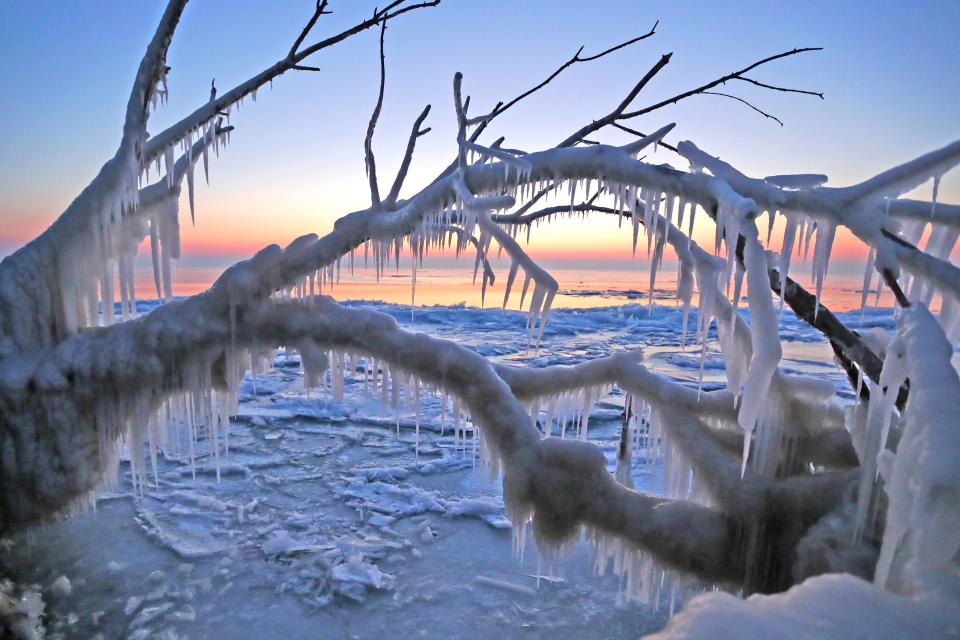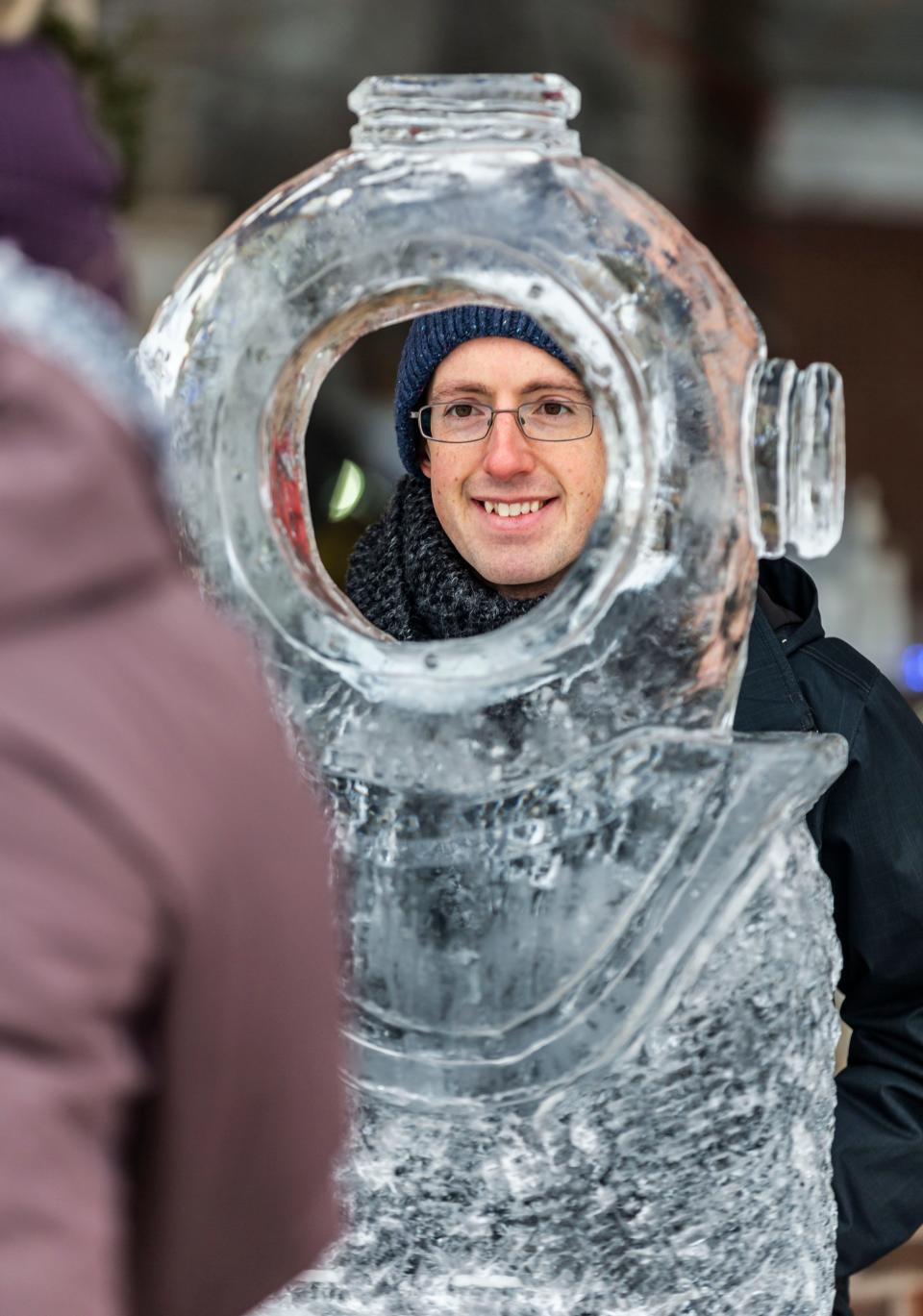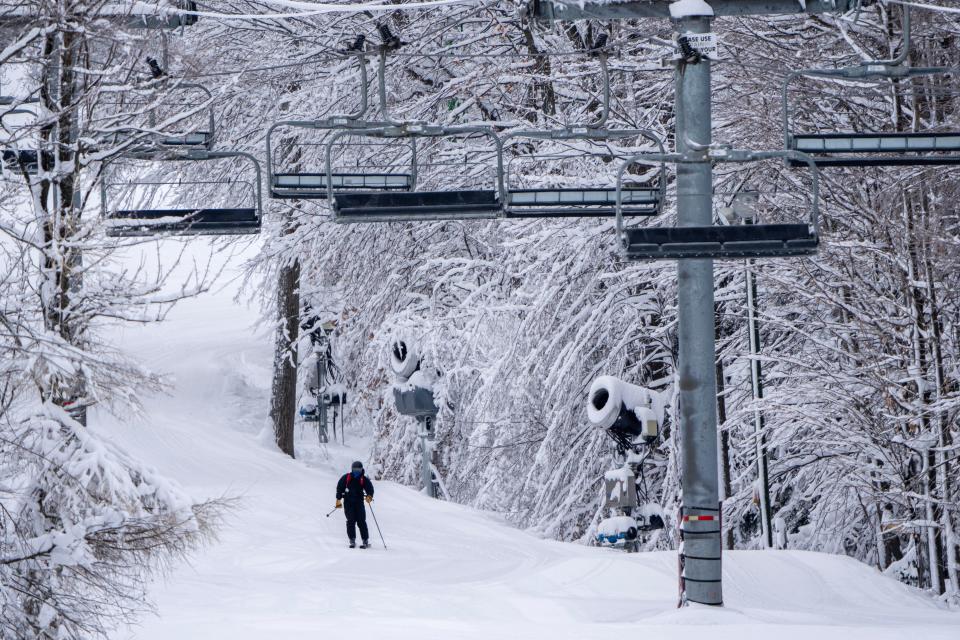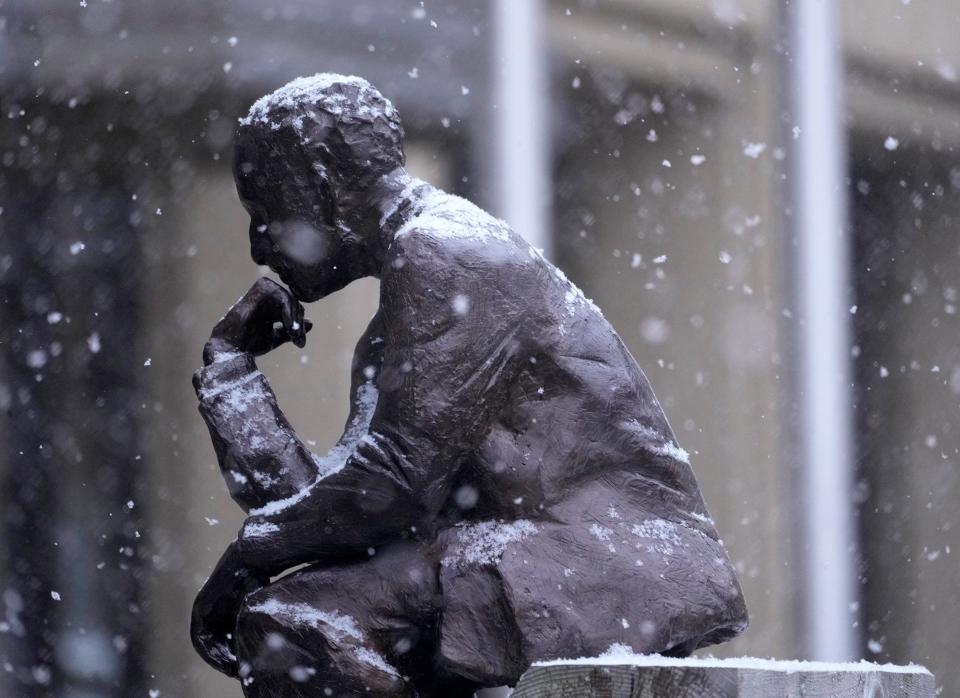It's been one of Milwaukee's warmest winters ever. How does that affect Wisconsin's economy and climate?
December 2023 was Milwaukee's warmest December on record, state climatologist Steve Vavrus said.
And while it won't be official until next week, he said preliminary data indicate that last month was also the warmest, or second-warmest, December in Wisconsin's history.
The unseasonably warm weather has had a wide range of effects on the state and Milwaukee area. The city has seen virtually no snow on the ground since Halloween. (However, that could change this weekend).
Furthermore, on Monday, the average ice cover across the Great Lakes hit a record low to begin the New Year since scientists began tracking it a half-century ago. Typically, by early January, about 9% of the Great Lakes are covered by ice, Vavrus said. But this year, only about 1/3 of one percent are currently covered.
"It's been a remarkable winter in terms of lack of ice cover, especially, as well as lack of snow cover," Vavrus said.
We asked him and other experts how this lack of snow and ice due to the warm temps could, and already is, affecting life in Milwaukee and Wisconsin. Here's what we learned.
More: 2023 was Milwaukee's warmest year on record

Why has winter been so warm in Wisconsin this year?
The explanation behind the ultra-warm winter we've seen so far this year is likely a combination of ongoing climate change and a weather event known as El Niño.
On one hand, climate change. Winters in Wisconsin have trended warmer since at least 1998, Vavrus said. In fact, the Wisconsin Department of Natural Resources reported, nearly all of the world's warmest winters since data tracking began in the late 1800s have occurred since 2001.
On the other hand, Wisconsin is also experiencing a particularly strong El Niño weather event this winter. During an El Niño event, the ocean warms to above-average sea surface temperatures in the central and eastern Pacific Ocean. Winters with moderate-to-strong El Niño effects tend to see above-average temperatures and below-average snowfall. The average snowfall during an El Niño year is about 42 inches, compared to the average of 46.3 inches across the 70 years the National Weather Service has tracked El Niño, local NWS meteorologist Aidan Kuroski told the Journal Sentinel this fall.
"It's hard to disentangle the two ― El Niño making it warmer and climate change making it warmer," Vavrus said. "It could very well be that they're both conspiring together to create an exceptionally warm winter."

Why are Wisconsin's lakes not yet frozen this winter?
Water temperatures in Lake Michigan have been "running well above average" since late September, Vavrus said.
At the end of December, the lake temperature was between 42 and 43 degrees, he continued, compared to the 39 degrees that's typical that time of year. This is due to the warm air temperatures we've experienced this fall and winter.
Ice cover in the Great Lakes has been declining for the past five decades, a trend that scientists say will continue. This will be met with extreme year-to-year fluctuations, evidenced by the near-record lows, followed by near-record highs seen in the last decade. The lakes have had below-average ice for 16 of the last 25 years.

What happens if the lakes don't freeze over?
One major concern with having no or below-average ice cover is shoreline erosion. Ice creates a "buffering effect" that prevents the windy conditions of winter storms from creating large waves that cause damage, Vavrus explained.
In January 2020, lack of ice cover led to waves damaging the shoreline so badly that Milwaukee County sought disaster relief funds from the government. Vavrus warned that similar damage could occur in the coming weeks if a winter storm materializes.
Another worry is that lack of ice cover leaves the lakes more prone to lake-effect snow, which requires warm open water and a cold, dry air mass. These same conditions can also cause fog.
Additionally, lack of ice cover can affect lake levels, reduce fish populations, disrupt food chains and create the ideal conditions for nuisance blue-green algae blooms in the summer.
Learn more: How lack of ice cover affects the Great Lakes

How is Wisconsin's warm winter affecting the economy and inland lakes?
Wisconsin's smaller inland lakes are also struggling to freeze in the warm weather. Even lakes in the northern part of the state, some of which have accumulated some ice, largely aren't thick enough for people to enjoy the ice safely, Vavrus said.
This has proven difficult for those who enjoy winter recreational activities like ice fishing, ice skating, hockey and snowmobiling ― and those whose livelihoods depend on these activities.
"It's driving ice anglers crazy," Mike Smith of Dick Smith's Live Bait and Tackle in Delafield told the Journal Sentinel. "It's not good for our business, either."
Multiple Wisconsin ice-fishing tournaments set to take place this weekend have been canceled, as was the 2024 Minnesota Ice Festival. Many Wisconsin communities that host large winter, snow or ice-sculpting festivals are quite worried at the moment, Vavrus said.
"In Madison, the Clean Lakes Alliance has a big fundraising event at the beginning of February on Lake Mendota, and I know they're sweating right now, wondering if they'll have enough ice by then to hold the event," he said.
As of Wednesday, Jan. 3 Lake Mendota was free of ice. This is out of the ordinary; the average freeze date for the lake is Dec. 20, according to records kept since 1852. But, the freeze date could very well keep getting later.
Small inland lakes have been freezing later by about one day each year, said Russell Cuhel, senior scientist at UW-Milwaukee's School of Freshwater Sciences. While that might not seem like a lot, over a decade "that's almost two weeks of new open water," Cuhel said.
When are Wisconsin's lakes expected to freeze over?
Ice festival lovers shouldn't lose hope just yet, Vavrus said.
"This time of year, it doesn't have to be exceptionally cold to form ice," he said. "We just need typical January weather."
And thankfully, he continued, Milwaukee is forecasted to see more days between 20 and 30 degrees in the next two weeks than we've seen all winter. This could be enough to make inland lakes safe for winter activities and upcoming festivals.

How has Wisconsin's warm winter affected other winter activities?
In addition to the lack of ice, this winter's warm temps have resulted in virtually no snow on the ground in Milwaukee so far this winter.
In fact, December 2023 was only one of three Decembers on record where the city saw just "a trace" of snow, according to National Oceanic and Atmospheric Administration data. It was one of 10 Decembers since records have been kept to see less than one-inch of snow. Milwaukee's average December snowfall is 9.2 inches.
This lack of powder has been difficult for area snow sports enthusiasts and ski resort professionals. Although most ski spots can make their own snow, it's been tough to keep up, and some resorts have had to scale back the number of trails they have open.
In December, Brandon Wagner, marketing director of Little Switzerland Ski Area in Slinger, told the Journal Sentinel he's seen smaller crowds than usual this year.
"The best marketing is always just going to be snow in people's yards, which makes people think about skiing or snowboarding," he said. "So it has been a bit slower than usual since people don't think it is feeling much like winter."

How could the lack of snow so far this year impact Wisconsin?
Snowless ground could also pose environmental and agricultural threats, Vavrus said.
"Snow cover is a really good insulator to the soil," he explained. "And if we don't have snow cover and we eventually get a cold airmass to come down, that can cause freezing to pretty good depths in soil. If it gets deep enough, that can cause problems with frozen pipes."
Frozen ground without a snow insulator could also prolong the effects of the drought conditions Wisconsin has been experiencing since late last spring.
In the spring, if the ground is not too frozen, snow melt penetrates into the ground, aiding the first crops of the season, Vavrus explained. But, if the ground is too frozen because it didn't snow enough or the first snow was later in the winter, he continued, most of the snow that could hydrate the soil instead runs off.
Journal Sentinel reporters Alex Groth, Caitlin Looby, Paul Smith and TJ Dysart contributed to this report.
This article originally appeared on Milwaukee Journal Sentinel: Warm winters have negative effects on Wisconsin's climate, economy

